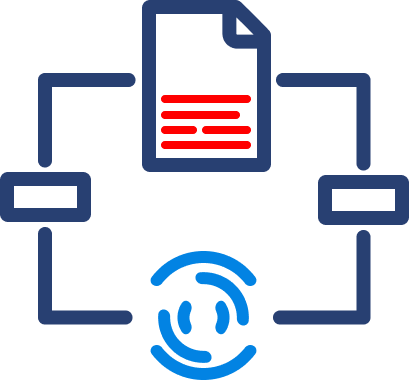How to Set Up Chargebee
Chargebee is a SaaS product company. Chargebee builds subscription and billing software. Chargebee powers some of the fastest growing SaaS and subscription-based companies in the world.
How to Set Up Chargebee: A Step-by-Step Guide
This guide will walk you through setting up Chargebee, configuring subscription plans, integrating payment gateways, automating invoicing, and managing revenue tracking for your business.
Step 1: Create a Chargebee Account
- Go to Chargebee’s website
- Visit Chargebee and click “Sign Up”.
- Enter Business Information
- Provide your company name, email, and password.
- Select your business type (SaaS, e-commerce, services, etc.).
- Verify Your Email
- Check your inbox for a confirmation email from Chargebee.
- Click the link to activate your account and log in.
Step 2: Configure Business Settings
- Set Your Business Currency
- Go to Settings > Configure Chargebee > Currencies.
- Select default currency (USD, EUR, GBP, etc.).
- Enable multi-currency if you have global customers.
- Set Up Your Business Address & Tax Settings
- Go to Settings > Taxes.
- Enable tax automation (VAT, GST, Sales Tax) based on customer locations.
- Configure tax-exempt customers if needed.
Step 3: Set Up Subscription Plans & Pricing
- Go to Product Catalog > Plans.
- Click “Create New Plan” and enter:
- Plan Name (e.g., "Pro Plan").
- Billing Frequency (monthly, yearly, custom cycles).
- Price per cycle (e.g., $49 per month).
- Trial Period (optional).
- Setup Fees (if applicable).
- Save the plan and repeat for different pricing tiers.
- Add Discounts & Coupons (Optional)
- Go to Product Catalog > Coupons.
- Create percentage-based or fixed-amount discounts.
Step 4: Integrate Payment Gateways
- Go to Settings > Configure Chargebee > Payment Gateways.
- Select and connect a gateway:
- Stripe (recommended for credit cards).
- PayPal (for PayPal payments).
- Authorize.Net, Braintree, Adyen, etc.
- Enable Payment Methods
- Choose Credit Card, ACH, Apple Pay, Google Pay, or Bank Transfer.
- Save and Test Transactions.
Step 5: Customize Checkout & Customer Portal
- Go to Settings > Hosted Pages.
- Enable the self-service customer portal where users can:
- Upgrade/downgrade subscriptions.
- Update payment details.
- View past invoices and receipts.
- Customize branding:
- Add your company logo and colors.
- Configure email notifications for billing events.
Step 6: Automate Invoicing & Dunning (Payment Recovery)
- Enable Automated Invoicing
- Go to Settings > Invoices & Credit Notes.
- Choose invoice generation rules.
- Enable email notifications for failed payments.
- Set Up Dunning (Failed Payment Recovery)
- Go to Settings > Dunning Management.
- Set up automatic payment retries (e.g., retry every 3 days, up to 3 attempts).
- Enable card expiry reminders to reduce payment failures.
Step 7: Integrate with Accounting & CRM Tools
- Go to Settings > Third-Party Integrations.
- Connect Chargebee to:
- QuickBooks/Xero – Automates financial reconciliation.
- Salesforce/HubSpot – Syncs customer subscriptions with CRM.
- Zapier – Automates custom workflows.
- Enable automatic invoice sync with accounting software.
Step 8: Set Up Analytics & Reporting
- Go to Reports > Revenue & Subscription Analytics.
- Monitor key metrics like:
- Monthly Recurring Revenue (MRR).
- Churn rate and customer retention.
- Payment failures and revenue recovery.
- Set up automated reports for financial insights.
Step 9: Test Your Checkout & Subscription Flow
- Go to Hosted Pages > Checkout Page.
- Test a Subscription Purchase:
- Use a test credit card to simulate transactions.
- Verify invoice generation and payment capture.
- Fix any UI or pricing errors before launching live.
Final Checks Before Going Live
✔ Confirm payment gateway integration is working.
✔ Test subscription upgrades, downgrades, and cancellations.
✔ Verify automated invoices and tax settings.
✔ Set up customer notifications and dunning emails.
✔ Monitor real-time analytics for billing insights.
Other
Maxio
Maxio brings core financial operations into one platform to help SaaS companies uncover critical financial insights and unlock their next stage of growth.
Other
Avalara
Avalara offers pre-built connectors and custom integrations into leading accounting, ERP, ecommerce and other business applications making tax compliance easy for customers.
Other
TaxTaker
TaxTaker makes getting government tax credits simple. Get the money you're owed in less than an hour.
Our Services
Full Send Finance exists to elevate your data.
Outsourced Accounting
With a delightful blend of technology and human wizardry - we help establish your accounting ecosystem, clean up current ones, and manage them on an ongoing basis.
Financial Planning & Analysis
We provide beautiful financial reporting and dashboarding to help you have financial clarity within your business at any point in time.
Fractional & Technical Accounting
We are human experts in accounting. We love solving problems and providing our clients with some much needed confidence that a solution exists.

Data Automation
We take your manual data exports, uploads, and reformats and turn them into a steady stream of consistent data - wherever you need it.
Data Analytics
We take your dusty excel report or dashboard and turn it into a multi-dimensional tool that allows you to cut the data however you like.

Fractional Data
From data strategy and team education to one-off data architecture projects, we support your temporary projects as your needs evolve.


